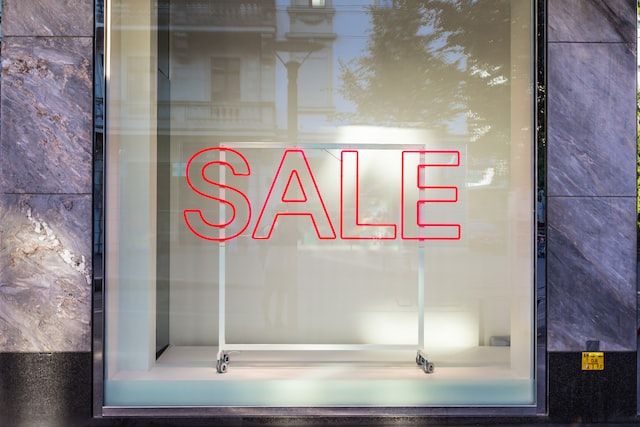While most people associate the holiday season with cozy nights in, for eCommerce sellers, it marks the busiest time of the year. You’ve probably already made sure you have eCommerce insurance in place as you get everything in place for the winter rush. But with Black Friday and Cyber Monday approaching, followed by Christmas and the New Year, how else can you maximize your store’s performance?

Black Friday and its newer online counterpart Cyber Monday are the biggest selling days of the year, followed just a month later by Boxing Day. With consumers on the hunt for bargains, eCommerce sellers who get this holiday season right can really maximize profits, turning a good year into a great one.
Black Friday is always the day after Thanksgiving, falling this year on November 25, 2022. Consumers will mostly be looking for newer big ticket items, but that doesn’t mean eCommerce sellers can’t get in on the action. Last year, consumers spent $8.9 billion online on Black Friday.
Cyber Monday is eCommerce’s answer to Black Friday, and comes three days later, on the following Monday. This year it will fall on November 28th. Consumers tend to shift their focus from the big ticket items to smaller unique gifts from independent retailers, and tech items that are best bought online.
Here’s how to make the most of the holiday season as an eCommerce seller.
Table of Contents
Do start planning your sale early
The more prepared you can be ahead of the end of year shopping season, the better your sales are likely to go. Carefully consider which items in your inventory are most likely to appeal to shoppers on these days, and what sort of discounts you can offer.
Last year, the average discount offered on Black Friday was 24%. This is lower than it has been in previous years, as retailers were still dealing with the fallout from the pandemic.
In addition, fewer than half of retailers offered storewide discounts.
In addition to discounts, consider what you can offer to make your sale competitive. 66% of online consumers expect free shipping for every purchase. While this might not be practical for you all year round, it could be a good sale incentive on these two days.
Planning ahead means thinking as far ahead as it takes to get it right. Carry out competitor research on the two sales days, taking note of what your competitors are offering and at what prices; what other incentives they’re giving to buy; and keep an eye out for any other good ideas you can include in your strategy. Hold on to your findings for next year’s sales.
Also, think about what you can offer to make your sale competitive. 66% of online consumers expect free shipping for every purchase. While this might not be practical for you all year round, it could be a good sale incentive on these two days.
Planning ahead means thinking as far ahead as it takes to get it right. Carry out competitor research on the two sales days, taking note of what your competitors are offering and at what prices; what other incentives they’re giving to buy; and keep an eye out for any other good ideas you can include in your strategy. Hold on to your findings for next year’s sales.
Don’t lose sight of the big picture
Black Friday and Cyber Monday aren’t just sales days, they mark the start of the Christmas shopping season. That means consumers on the lookout for that perfect gift to place under the tree. Make it easy for them by framing your inventory around gift-giving themes, such as ‘For him’ and ‘For her’. And don’t get so obsessed with getting these sales days right that you neglect planning your activities throughout December. This season is a marathon, not a sprint.
Do get liability insurance to protect your business
Increased sales mean increased insurance costs, as the more you sell, the higher your exposure – a key factor when calculating your eCommerce liability insurance premiums. While it’s essential to be adequately covered, you don’t want to pay over the odds for coverage. Get ahead of the game by making sure you have the right coverage for your eCommerce store in place for you before you head into this busy season.

Don’t forget who your target audience is
- With the whole world and their dog browsing for bargains, it’s tempting to try to sell to everyone on the internet at once to maximize sales. In fact, to really put rocket fuel under your sales, it’s better to do the exact opposite. Hopefully you already have some understanding of who your target audience is, but it’s a good idea to remind yourself so that you get your sales messaging on target.
To identify your target audience and create a campaign that speaks to them:
- Use Google Analytics or a similar tool to find out who your current customers are.
- Figure out what your customer’s pain points are – what problem do they have that your product solves?
- Carry out competitor analysis. How are your competitors meeting the needs of your target audience? What keywords are they using?
- Create 3-5 personas, imaginary people who personify the demographic segments you are serving. Give them names! They will likely have different pain points that your products answer in different ways
- Create a campaign that speaks to each persona, telling them how your product will solve their problem.
Do organize your inventory and logistics
Inventory management is more of an art than a science, yet get it wrong and it can bring your sales season crashing down. Take a good look at your historical sales to predict your inventory needs over the sales season, then get your orders in in good time to be able to fill orders promptly when they come in. Delivery delays are still causing problems for many industries, so don’t try to cut delivery times down to the wire.
Although you don’t want too much stock hanging around once the sales are done, it’s better to overestimate than to underestimate, as you can always sell off excess stock later, while running out of stock means missed sales.
While considering your stock, also think about how you’re going to get it out to the customers. The big competitors have raised consumers expectations with next day delivery. If you can find a way to offer it, do. If not, make sure the delivery experience is as smooth as possible, and wow the customer with premium packaging, showcasing your product when it arrives in their hands.
Don’t Push Too hard
There’s a fine line between letting your customers know that you’ll be offering exciting savings on Black Friday, Cyber Monday, and Boxing Day, and looking desperate for sales. In the run up to the sales, tease your email list and social followers with hints that they’ll want to visit your store on those days, but intersperse your sales marketing with your core message, or you’ll alienate your followers. As with most things in life, less is more.

Do price competitively
As Cyber Monday grows in popularity, consumers are becoming more sophisticated in how they take advantage of the sales. Comparisons on price and other benefits can be made with one click of a button, so make sure your offer comes out on top.
A study published by Harvard Business Review found that a 1% improvement in price can yield a 11.1% increase in profit, so getting the price right really matters. To ensure that you’re competitively priced, you first need to figure out your gross profit margin target (GPMT). Do this by using the following formula:
(Price Per Item – Cost Per Item) / Price Per Item = GPMT
When adding up costs, don’t forget to take every cost involved in the creation, distribution and marketing of your product, including:
- Materials
- Labor
- Assembly, including machine costs
- Storage
- Shipping
- Marketing
- Taxes
- Overheads
- Returns
- Any other cost you carry
Once you have calculated your GPMT at a particular price point, you can model the price at a number of different points to measure the impact on your predicted revenue.
To keep prices down while making a profit, offer bundles: items from your inventory that complement each other and are sold as one unit at a set price. Price the bundle so that the consumer is making a saving on each individual item, but is incentivized to buy more items overall, raising your average order value. To make up your bundles, look for items that customers regularly purchase together.
Similarly, consider upselling to your customers. Upsells are separate complimentary items that consumers may be likely to buy if prompted when they place an item in their basket or reach the checkout. For example, if you sell tableware, you can upsell by showing customers a selection of cutlery sets when they select crockery to buy.
Don’t neglect customer service
In the rush of the holiday season, it’s tempting to put customer service on the back burner, to get back to when you have more time to properly answer their concerns. Again, to maximize sales, do the opposite. With so many new customers visiting your store, probably for the first time, you want to make a great first impression. Take the time to answer any questions they have to lock in their sales, even if it means taking on seasonal staff to help field questions and queries.
Do as much as possible in advance, and get help for everything else
Running an eCommerce store can feel like juggling plates, as you find new leads, warm those leads up, make the sale, ship the products and follow up with great customer service all at once. That cycle intensifies over Black Friday and Cyber Monday, and won’t calm down till after the New Year. This may leave you frantically spinning to keep up. But it doesn’t have to. Certain elements, such as your marketing, can be planned and scheduled well in advance, allowing you to leave it running seamlessly in the background while you get on with everything else.
You may also want to take on some seasonal help with fulfilling orders to make sure everything gets to the customer promptly and in outstanding condition.
Don’t forget to have fun
You launched your eCommerce store because you had a passion for your product. Enjoy the experience of sharing it with customers, new and old.
And don’t forget that this is your holiday season too — why not take a quick break on Black Friday or Cyber Monday to look for something to treat yourself to?
If you want to sleep easy this season, make sure your store is protected. By getting eCommerce insurance, you can guarantee that you will be protected from all kinds of nasty surprises that this season may bring. Remember, more sales means higher exposure. Don’t sell without insurance this season! Get covered today.





